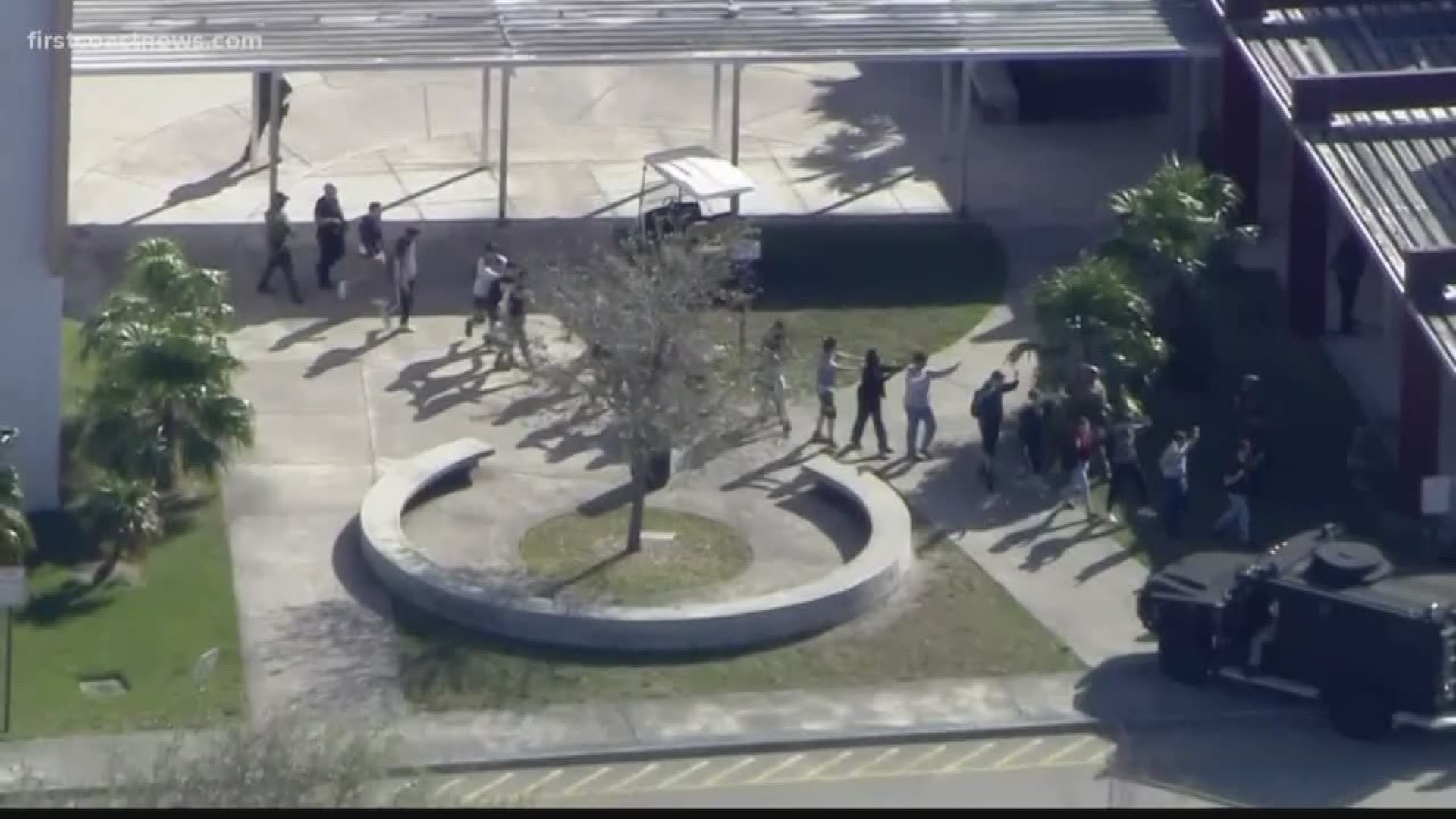JACKSONVILLE, Fla. -- The gunfire captured in the hallways of Stoneman Douglas High School, so close to home, evokes strong emotions: Fear, confusion, and anger.
"We're supposed to be able to send our kids to school knowing they're going to get a good education and that they're going to be safe. When my kids get on the bus in the morning, I sit there and think is this the last time I'm going to see my daughter," Tessa Irla said.
Irla is a St. Johns County mother of two girls, ages 8 and 6. Sitting next to her, Patrick Rumble, the father of two boys ages 6 and 2. These parents realize their children live in a world where lockdown drills are the new normal.
"It's hit pretty close to home here in Florida and it really does make you think it just takes one bad person to ruin a lot of lives," Rumble added.
Irla's daughter, Mikka, is in the second grade.
"We lock the doors and go into the bathroom and stand there and wait until the coast is clear," Mikka explained.
Rumble's son, Piercen, is only in kindergarten.
"Our teacher shuts the door and lock it and the teacher turns off the lights. We go in the bathrooms and be as quiet as we can. Just in case there's a bad guy or somebody we don't know," Piercen responded.
These kids showed First Coast News how they're taught to hide from a person with bad intentions. But, what these children are learning to do in school (locking doors, hiding under desks, hiding in the bathroom), is it right? Will it actually save their lives?
Chris Oklevitch doesn't think so. He's a certified safety expert, based in Jacksonville, who teaches self-defense and a father with children in school.
"We've seen from previous experiences like Sandy Hook where we lost 20 first graders, from hiding in bathrooms, from hiding under desks, it doesn't give them a chance should that active shooter make entry," Oklevitch said. "It's the same thing if an armed intruder comes in your house, you're safer outside of your home than inside your home. The same thing applies to businesses or schools."
He says our local schools should be following the federal government's 2013 guidelines on school emergency operation plans. On page 64, it mentions the run, hide, fight method.
"[On the First Coast], a lot of our schools here aren't following the latest guidelines,” he said.
So, what is the run, hide, fight method?
Oklevitch gave us a demonstration. In the scenario, he's a gunman coming into the classroom. Rumble is playing the role of a teacher. He distracts the gunman while the kids run out of the room.
In an active shooter training video, you can see students being told to run out of the classroom, down hallways, even jump out of a window to escape from a shooter. If that is not an option, students are taught to hide, but they're also taught to create a barrier at the door so the shooter can't get in.
If they can't run or hide, the teachers in the video demonstrate how to protect students by fighting off an intruder with anything they can find in the classroom.
"I think we don't have a choice, but to talk about it now," Oklevitch said.
Irla says she has contacted her children's school district to see if they will teach the run, hide, fight method in their schools. But, she says, she hasn't received a response.
Rumble says he can understand the hesitation.
"It's a tough situation to be in because I don't know if there is an exact one right thing to do,” he said.
These parents say they just want to open the doors of discussion that they think will save lives.
"There's more parents that are concerned about this than just us," Irla added.
According to an interview with a Broward County school board member, where the Parkland shooting happened, students had undergone various levels of active shooter training. But, the gunman, a former student, was familiar with the plan and also hit the fire alarm, which caused students to flood into the hallways.
The general response First Coast News received from our local school districts is that they do practice lockdown drills, that are reviewed by law enforcement. But, they would not share the details of those drills.
St. Johns County says active shooter type drills happen at least once a semester and their plan is reviewed by law enforcement. But, they said what their students are taught, couldn't be shared, because it is exempt from public record.
Clay County responded saying they follow all federal and state guidelines on active shooter training, but the district does not disclose details of the drill for security purposes.
Duval County did not respond with an answer by the time this story aired.

